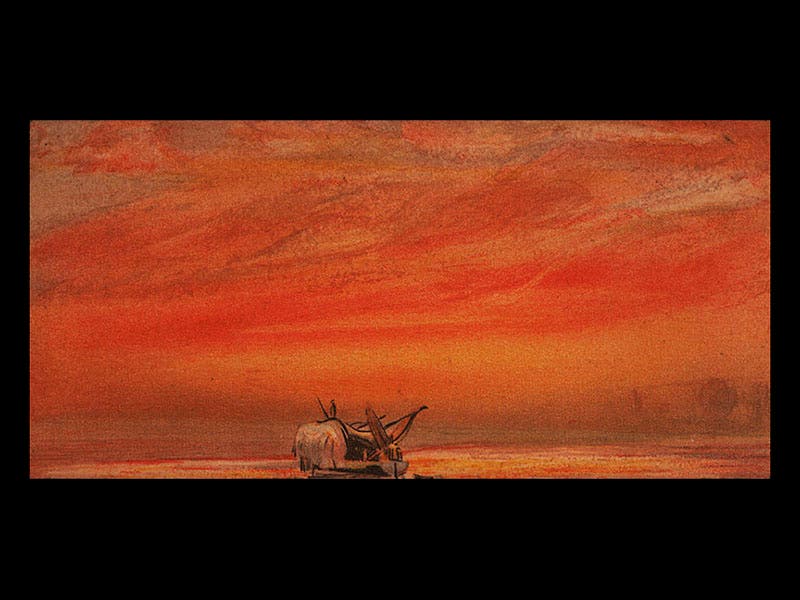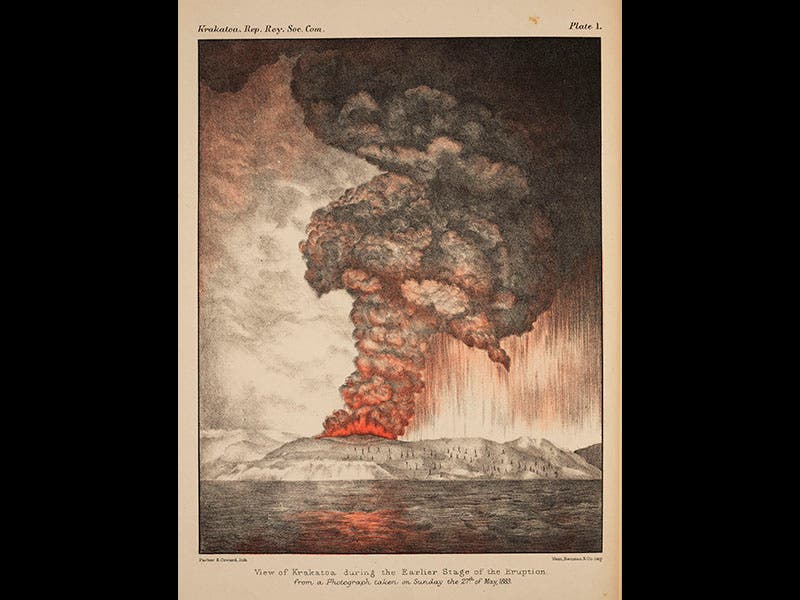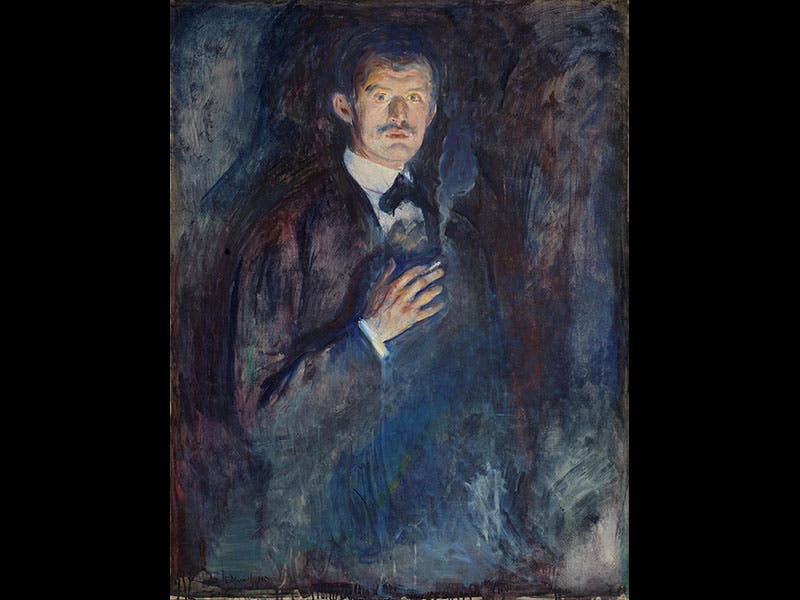Scientist of the Day - Edvard Munch

Linda Hall Library

Linda Hall Library

Linda Hall Library
Edvard Munch, a Norwegian artist, was born Dec. 12, 1863. Munch's The Scream is one of the most iconic paintings in the world, as it seems to express so dramatically the angst of modern existence. There are four surviving versions of the painting: a pastel of 1893; an oil and tempera (also 1893), which is in the National Gallery in Oslo; a pastel of 1895, and a second oil and tempera version (1910) in the Munch Museum, also in Oslo. The National Gallery version is the one most often reproduced, and the one we show above (first image).
Munch left several written records describing the motivation for the painting; he had been walking with friends outside Oslo (Christiania back then), when the sunset dissolved into a "flaming sword of blood", with "glaring tongues of fire," and he felt something like a great scream. But art historians were not able to pin down a specific motivating event, although most suspected it occurred sometime in 1892. Then three historians of astronomy and art took on the puzzle, and they concluded that the painting evoked vivid memories of 1883, when the Indonesian volcano Krakatoa erupted with a massive explosion. The eruption occurred on Aug. 11, 1883, and by November, the evening skies of northern Europe were turned crimson and scarlet by the accumulating volcanic dust. The three historians found a great deal of evidence from this time describing the striking red sunsets. For example, the Royal Society of London issued an official report on the eruption in 1888, and the two-page frontispiece displayed six watercolors of sunsets drawn in the fall of 1883. We have this report in the Library, and we reproduce above the right-hand page of the frontispiece (second image), as well as a detail of the scene at the top (third image), so that you can compare it to the sky in The Scream. The report also has an impressive lithograph of the actual eruption of Aug. 11 (fourth image).
Most art historians have been skeptical of the astronomers' findings, uncomfortable with the long delay between witnessing the event and painting it. But the astronomical historians pointed out that the other paintings of the The Frieze of Life, the Munch series that included The Scream as well as Despair and Anxiety, were also based on events of the early 1880s. The history detectives were also able to track down the very spot where Munch viewed and perhaps composed his scene of terror. You can download here a copy of their article of 2004: “When the Sky Ran Red: The Story Behind the ‘Scream’”.
The Scream is regularly in the news, as the 1893 and 1910 versions have each been stolen (and recovered) in the past 25 years, and the second pastel version, painted in 1895, was sold at auction in 2012 for about $120 million, at the time the most ever paid for any painting at auction.
There are many surviving photographs of Munch, but we prefer his self-portrait, in the National Gallery in Oslo (fifth image). We are not sure why it does not hang in the "Munch Room" of the Gallery (sixth image), where you can see The Scream on the far wall, just left of center.
Dr. William B. Ashworth, Jr., Consultant for the History of Science, Linda Hall Library and Associate Professor, Department of History, University of Missouri-Kansas City. Comments or corrections are welcome; please direct to ashworthw@umkc.edu.









